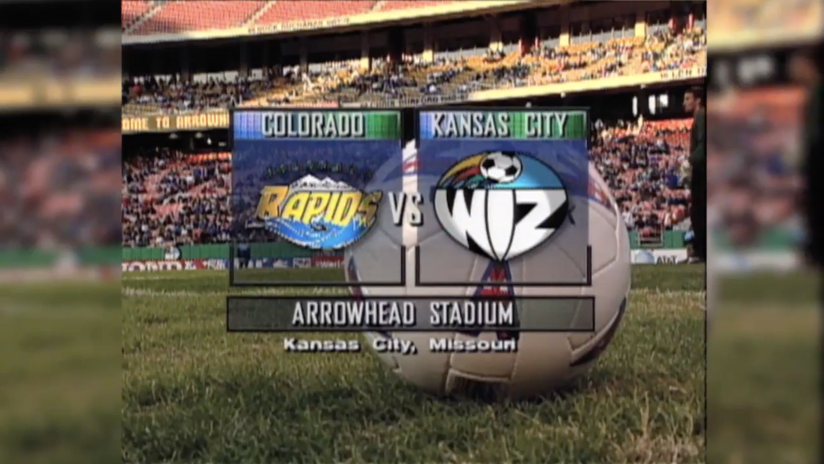Sporting KC celebrates the club's 25th season this year as one of 10 original teams when Major League Soccer kicked off in April 1996. SportingKC.com is looking back at 25 moments that led up to our inaugural match in a seven-part special series: Part I, Part II, Part III and Part IV.
October 17, 1995
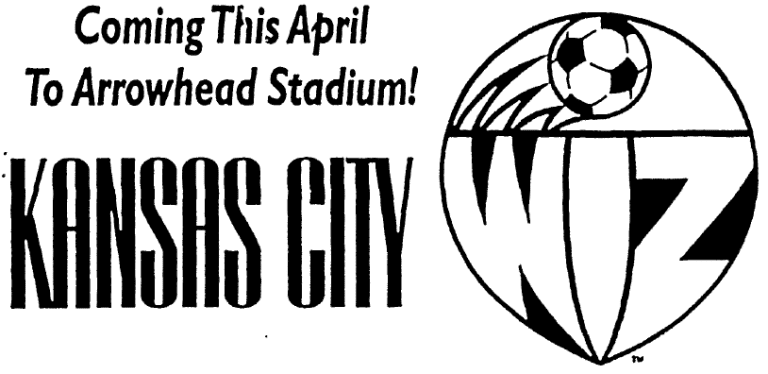
With the help of some magical, mystical inspiration, we bring you Kansas City.
ABC announcer -- and Shawnee Mission, Kansas native -- Roger Twibell was emceeing Major League Soccer’s marquee event, MLS Unveiled, at the Palladium nightclub in New York City on Oct. 17, 1995.
In his next breath, he would reveal Kansas City’s team name, queuing a video to debut the team logo, followed by announcing the team’s first signing – debuting the team uniform - to the stage.
A historic moment that was the culmination of months of brand building behind the scenes between the club, the league and adidas.
The home of the Wiz!
As anticipated, “initial reaction to the new nickname ranged from perplexity to ridicule.”
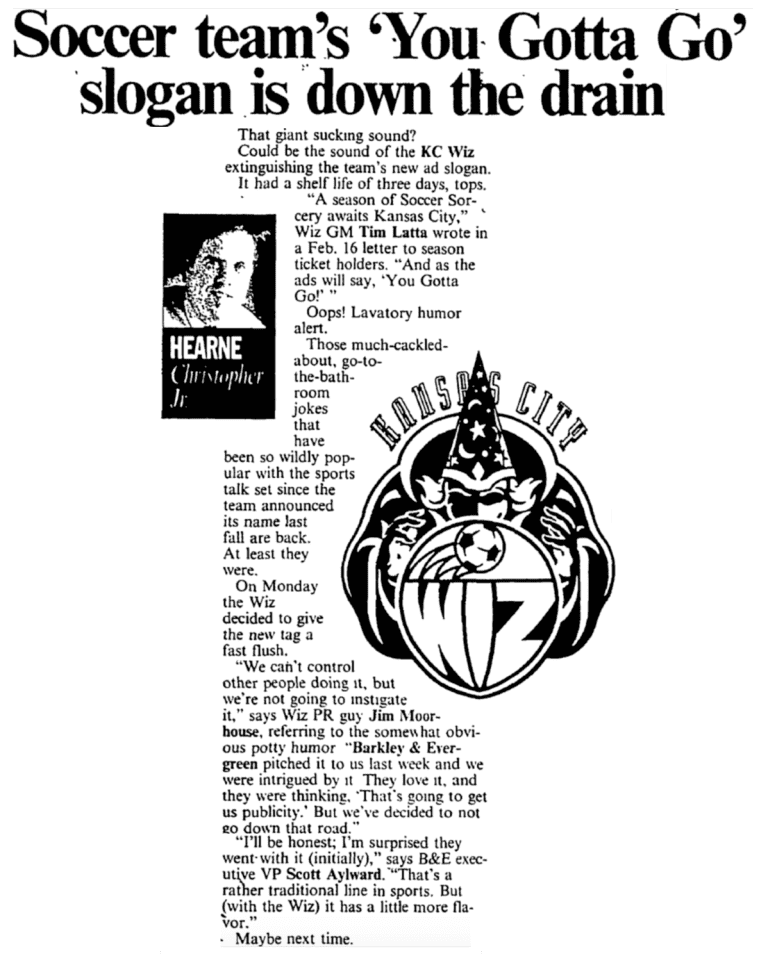
Bewildering. Horribly laughable. A particularly bizarre nickname.
Possibly the worst nickname in the history of pro sports.
The worst thing foisted on the U.S. sports public since artificial turf.
The Wiz was greeted on radio by the predictable flushing toilet sound effect.
Their nickname will bring new meaning to the chant, “We’re No. 1, we’re No. 1.”
The Kansas City Wiz drew round-about laughter for its nickname, and compounded it with a couple of classic marketing slogans: “You Gotta Go!” and later the immortal “Let’s Go Wiz.”
Even Sports Illustrated joined in the jabs.
They must have thought the Kansas City Tinkle didn't sound dignified enough. If nothing else, the Wiz has positioned itself for some lucrative advertising deals: Tonight, sports fans, the Wiz was brought to you by Budweiser.
“I love it. Any type of controversy is not bad for us,” jovial head coach Ron Newman said.
A local graphic artist redesigned the team’s logo to feature a toilet, long before an area plumber flew a banner over Arrowhead for the team’s inaugural game, which produced this incomparable quote from team general manager Tim Latta to clear the air on any misconceptions.
“We are definitely not a urinal. Arrowhead will not be the Yellow Brick Road. Dorothy and the Tin Man will not be our mascots.”
On that note...Chopper the Dragon, brought to life by former UMKC cheerleader turned Kasey the Kangaroo Kirk Melton, would become the team’s original mascot. In a similar vein, the club would launch a Jr. Dragons youth club and the team’s first supporters group, spearheaded by Sam Pierron, would be called the Mystics, a precursor to the KC Cauldron.
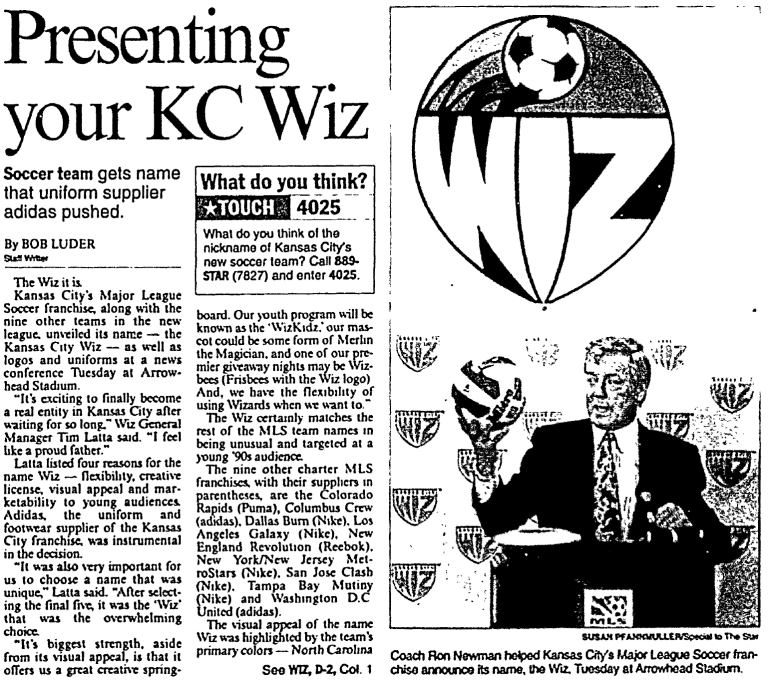
But how exactly did the Wiz magically become the name of choice for Kansas City’s MLS franchise?
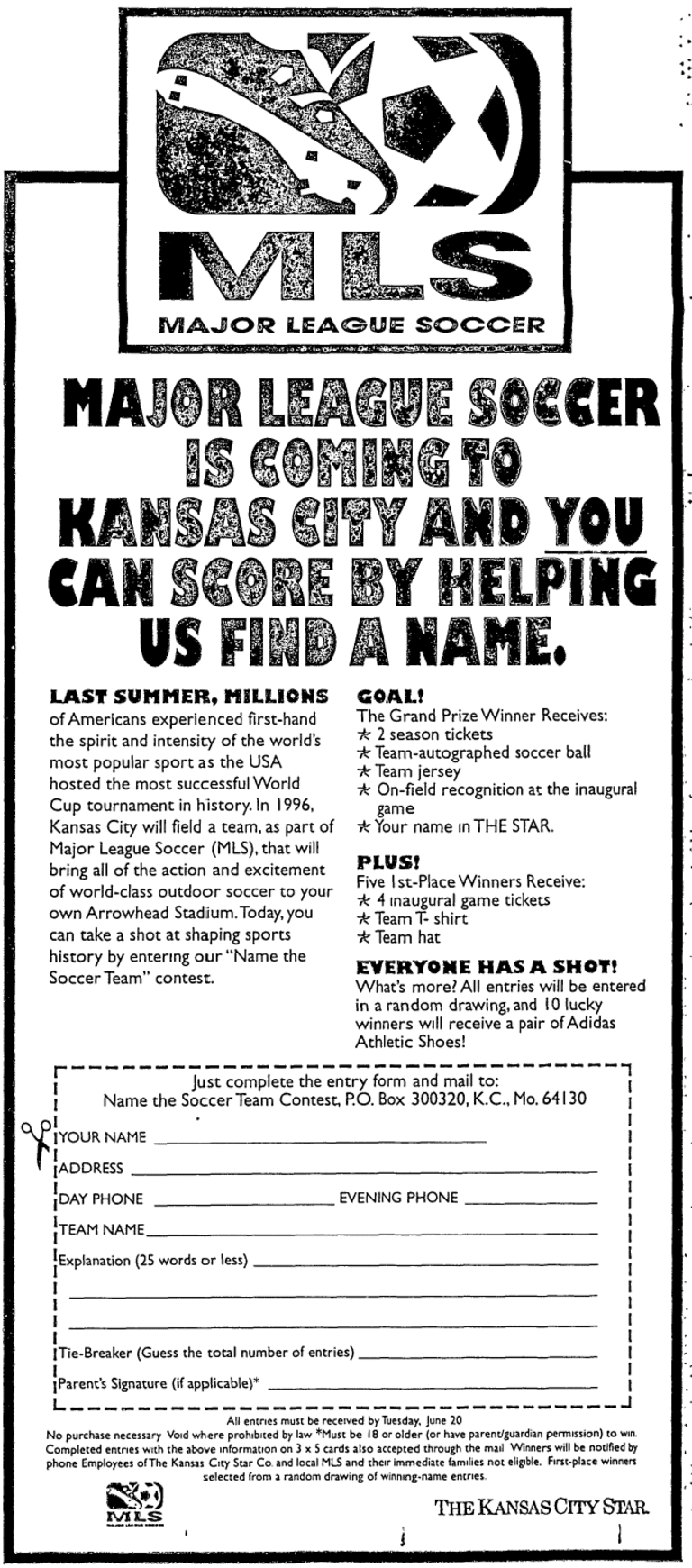
That explanation starts on June 8, 1995 when a month-long, name-the-team contest began in the Kansas City Star.
More than 3,200 entries were submitted with six suggesting Wizards as the team name, including Lee’s Summit, Mo. nine-year-old Sarah Starr who was chosen as the promotion’s grand prize winner.
Four other team names were also considered as finalists: Quest, Rivercats, Roughriders and Twisters.
“We expected maybe two or three quality names to jump out at us, but we were pleasantly surprised,” Latta said. “It was also very important for us to choose a name that was unique. After selecting the final five, it was the 'Wiz' that was the overwhelming choice.”
So why Wiz and not Wizards?
That answer would come 13 months later when the team officially became the Kansas City Wizards on Nov. 18, 1996.
“Our original desire was to use the name Wizards as a result of the '1995 Name the Team' contest, but the Delaware Wizards [of the USISL] held the trademark rights to the name,” Latta said. “After discussions with our equipment supplier, the decision was made to go with the shortened version Wiz, which followed the league's progressive marketing approach.
"After we announced the team name, the Eastern-based electronics firm 'Nobody Beats The Wiz Inc.' expressed concern that we may be infringing upon the trademark rights to the name Wiz. With the success of MLS in its inaugural season, the Delaware Wizards have since indicated their desire to help support the league and the sport, and have released their claim to provide the MLS full and permanent approval to use the name Wizards."
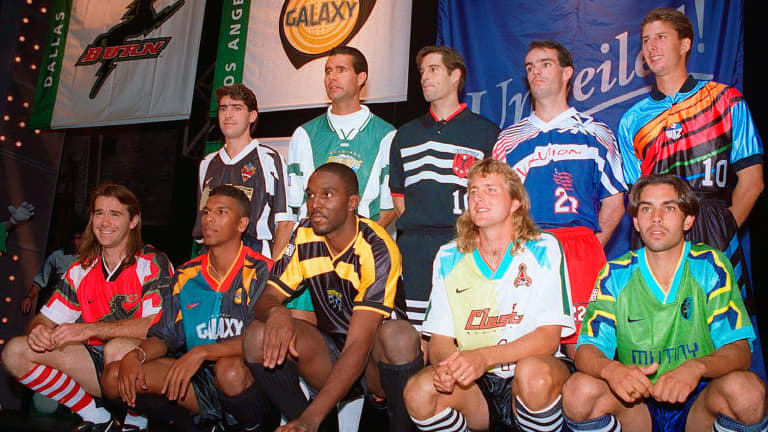
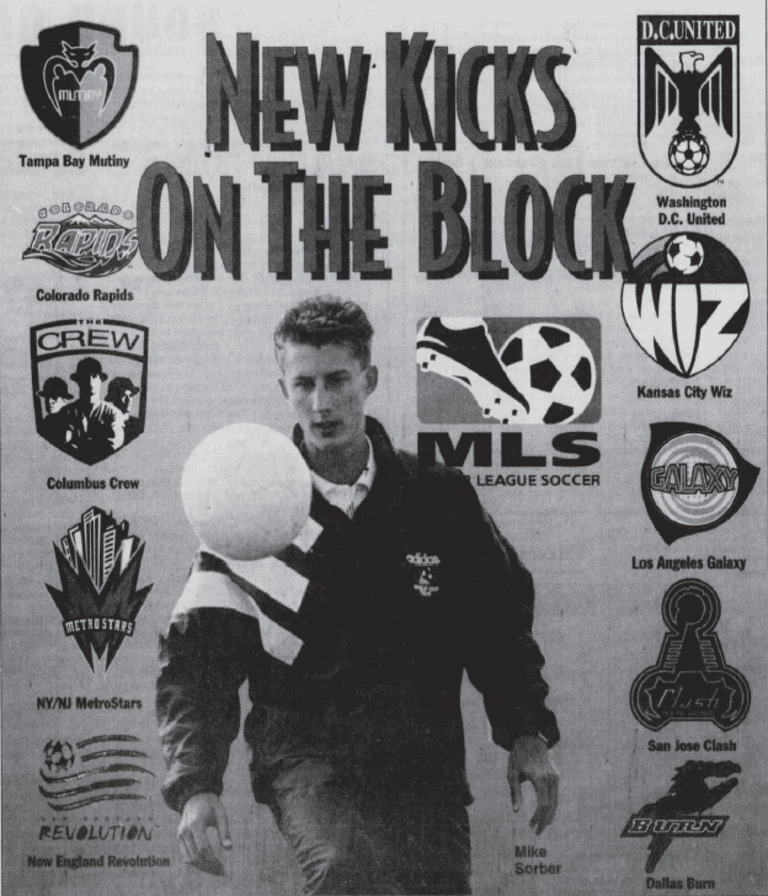
An innocent bystander in the brand unveil, the club’s first player – sporting the club’s now iconic rainbow kit, highlighted by the team’s official Carolina blue and black primary colors -- was coming home to the Show-Me State as allocated by Major League Soccer.
The first member of the Wiz, Twibell exclaimed, is the star of the U.S. World Cup team who played every minute so admirably: Mr. Mike Sorber.
The 24-year-old midfielder, born and raised in St. Louis, was acquired from UNAM Pumas in Mexico – where he played alongside El Tri legends Jorge Campos and Claudio Suarez – and brought international experience at the highest levels with appearances at the 1994 FIFA World Cup and 1995 Copa America.
“This is a dream come true,” said Sorber, who earned 67 caps for the U.S. from 1992-1998. “I visited Kansas City and talked with their owner, Lamar Hunt. I saw their stadium and spoke with the general manager, Tim Latta. I had spoken with the Dallas venue earlier, but I liked Kansas City the best. It’s a little closer to St. Louis and should give me the best chance.”
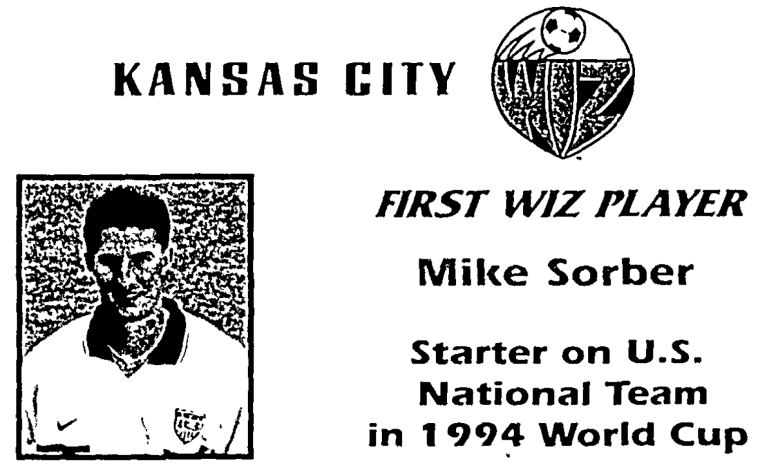
“To begin with a player like Sorber as your first player is ideal. He's the perfect player to build around, consistent and versatile,” Newman said. “I'm delighted we got him.”
Well, the Wiz didn’t have him just yet. Sorber first had to finish his season in Mexico and would not join his future teammates in Kansas City for another six months – training for the first time on April 25, three games into the season. A week later, Sorber would make an instant impact on his MLS debut with an assist five minutes into the match and the game-winning goal from 35 yards out in a 6-4 thriller over Columbus on May 2 at Arrowhead Stadium.
October 28, 1995
Nearly a year earlier, long before Kansas City had even been awarded a team, Major League Soccer held tryouts at locations across the country.
The last of the seven tryouts took place in KC from Nov. 12-13, 1994 with MLS scouts, including U.S. MNT assistant coach Steve Sampson, in attendance at Kenneth Road Soccer Complex, a facility used primarily by amateur soccer leagues and tournaments.
Fast forward to Oct. 28, 1995 for the first official Kansas City Wiz tryout camp. Open to players ages 16 and up, the tryout featured more than 180 participants.
“I think Brian McBride might have actually come to the tryout," said then-Director of Player Development Guy Newman. "We were looking under stones. We were looking everywhere for players. Anybody that could kick a ball we were keeping an eye out for. Anybody, anywhere.”
The tryout was held at the Chiefs practice facility at the Truman Sports Complex, but only after an assist from Hunt -- a man who would help tape 40,000 Wiz flyers onto Arrowhead Stadium seat backs before the Chiefs next home.
“We have to act and behave major league,” Newman said. “For example, they wanted to do a local tryout camp here, but we needed three fields in close proximity to each other. I couldn't see enough quality fields. I said I'd rather not do it if it looked shoddy.
“Then I looked at the Kansas City Chiefs' training facility. I'd heard it was like gold. I whispered to Lamar that I'd like to use it, and he thought it was a great idea. When Lamar asks someone -- and he always asks -- it always comes through. So now I've got a premier training facility and anyone who shows up will be impressed.”
Things were on the up and up for professional soccer in Kansas City.
The next night, the Kansas City Attack welcomed a crowd of 10,027 fans at Kemper Arena for their National Professional Soccer League home opener – a regular-season record for the team. The Attack, tben coached by current Sporting KC assistant Zoran Savic, would go on an NPSL-record 18-game winning streak that season in route to recording the league’s best regular season record before beating rivals St. Louis and Wichita in a run to the NPSL championship series.
December 18, 1995
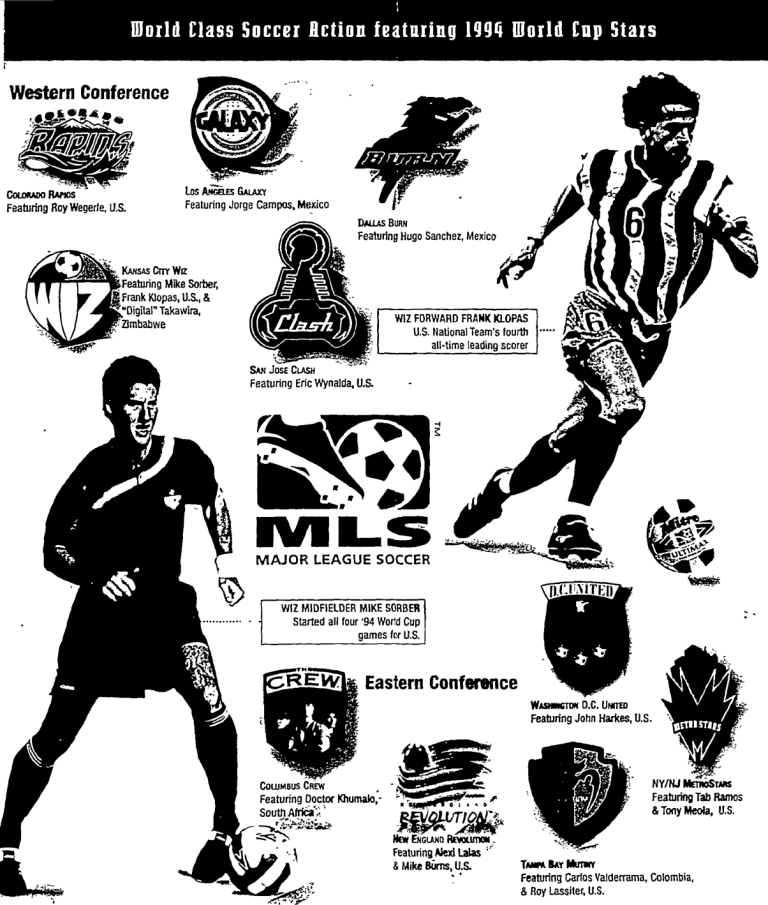
As a single-entity enterprise, Major League Soccer -- which hired Doug Logan on Nov. 21 as commissioner, president and CEO -- was in the process of signing players from across the world.
By mid-December, 105 players were under contract, including the latest addition to the player pool: two-time South American Player of the Year Carlos Valderrama, who would become the league’s first MVP.
The top 40 players would get allocated by assigning four players to each of the 10 teams, while the rest would be made available to select via a league-wide draft.
“We’ll eventually get something like 250 and let the coaches, of course, pick the final teams to get the number to 180,” MLS Deputy Commissioner Sunil Gulati told the LA Times. “We are looking primarily south, to Mexico, Central America and South America, and to other parts of the world, Africa and Asia, that are maybe better (fits) stylistically and economically (than Europe).”
Nevertheless, Kansas City’s final three allocated players would all come from European leagues, beginning with the presentation of 29-year-old midfielder Fotios "Frank" Klopas – signed after playing five seasons in his native Greece – on Dec. 18, 1995 at Arrowhead Stadium.
“I was one of the first players to sign with MLS, and I asked to play with Kansas City,” said Klopas, who immigrated to Chicago as a child. “It is closest to Chicago, and I have played here before. I’ve always wanted to play for Ron Newman and this was the perfect situation.”

“I have tried to get this kid under contract since he was 20 years old,'' Newman quipped about Klopas, who turned pro with the Chicago Sting straight out of high school in 1984. “He has proven he can score goals at the highest level.''
Klopas played in the 1988 Summer Olympics (alongside Peter Vermes) and was a teammate of Sorber on the U.S. Men’s National Team at the 1994 FIFA World Cup and 1995 Copa America. In the latter, Klopas scored the game-winning goal in the Americans stunning upset of Argentina and then converted the decisive penalty in a shootout victory over Mexico in the quarterfinals.
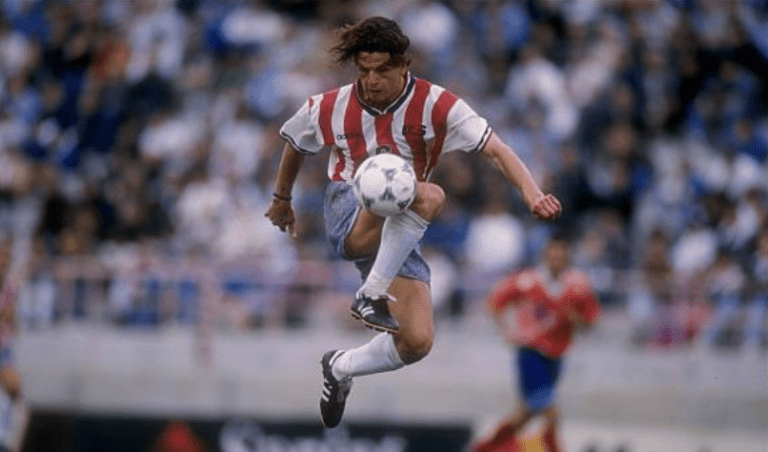
Klopas’ history with the national team, scoring 12 goals in 40 appearances, was well documented. His future with Kansas City was a blank slate and, like Sorber, he wasted little time writing his name into the club record books with a goal on his MLS debut in the team’s inaugural match.
As the calendar turns to 1996 – Wiz the season to be jolly, read the club's holiday ad campaign – and we continue our 25th season retrospective series, up next is the signing of two fan favorites, Digital and Preki, as well as the MLS Combine and MLS Draft. Check back tomorrow for part VI as SportingKC.com reflects on 25 moments that set the stage for Kansas City's MLS debut on April 13, 1996.

